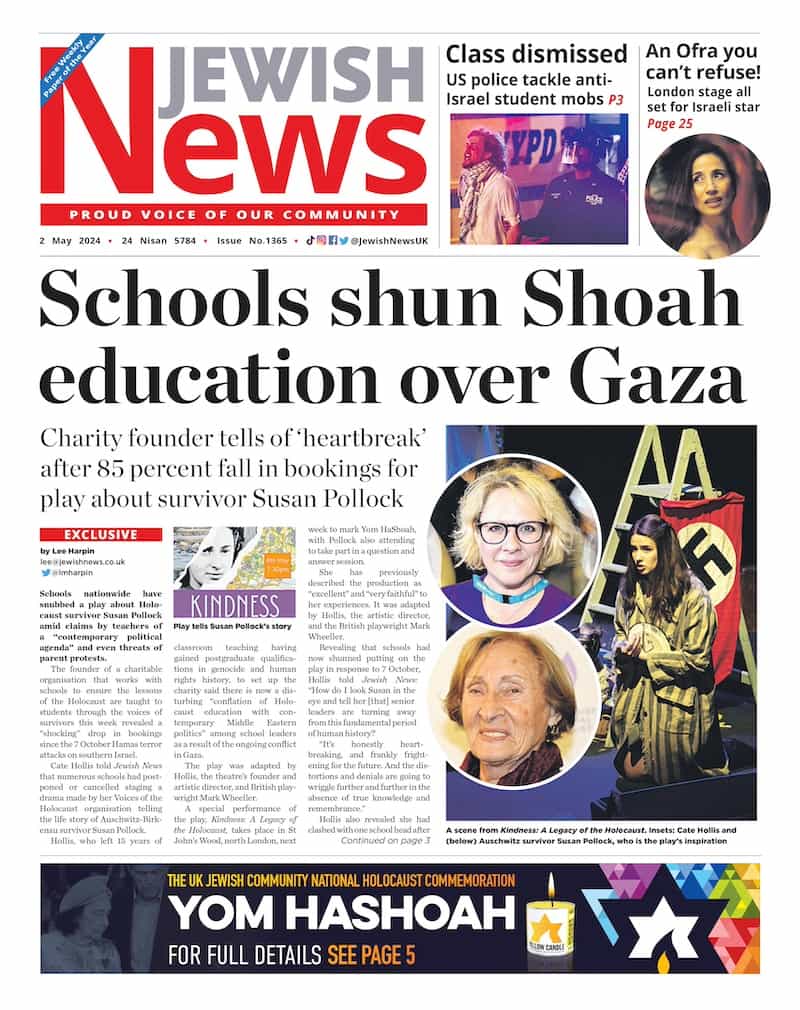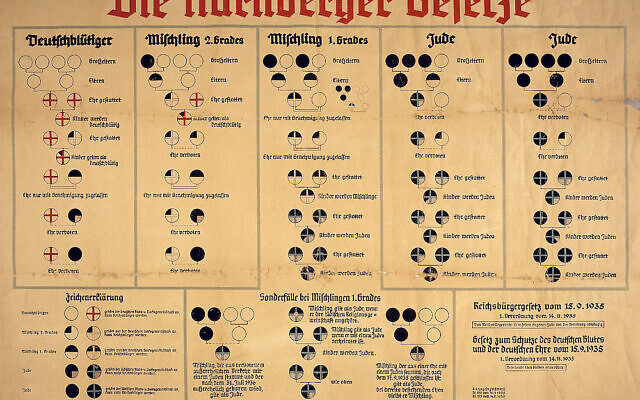‘English Jews: 330,000’ – we were all on the list
Of the 11 million Jews listed on the Wannsee Protocol, six million were killed. Fewer than 300,000 survived the camps and death marches.
Historians have said that the Protocol listing Europe’s 11 million Jews for extermination was still “largely unknown” outside scholarly circles, on the 80th anniversary of the Nazis’ Wannsee Conference.
Academics and authors lined up alongside the British government’s antisemitism adviser Lord Mann in a webinar ahead of Holocaust Memorial Day to describe how 15 senior Nazis, including Adolf Eichmann, planned the mechanics of the Final Solution.
Organised by the Henry Jackson Society and moderated by the society’s director, Alan Mendoza, the event featured the Deborah Hartmann, the Austrian director of Wannsee House, an hour’s drive from Berlin, which is now a Holocaust Museum.
Analysts say the increasing strength of Germany’s far-right movement only adds to the importance of museums and memorials designed to showcase the horrors the follow when such ideologies gain power.
The worldwide Jewish population in 1939 was about 16 million, with almost two thirds living in Europe. Of the 11 million Jews listed on the Wannsee Protocol, six million were killed. Fewer than 300,000 survived the camps and death marches.
Dr Shimon Samuels of the Simon Wiesenthal Centre in Paris, who also spoke on the webinar, said the Wannsee Protocol – a breakdown of 11 million Jews the Nazis had listed for extermination – was “largely unknown” to all but specialists and historians.
“The meeting at Wannsee on 20 January 1942 determined who would live and who would die – and I look at this as a very personal thing,” he told Jewish News before the event.
“I was born two weeks after VE [Victory in Europe] Day and grew up in London with a tremendous respect for water, meaning the English Channel, which was a stopping point.
“As a child, I knew that if Hitler had breached it, we wouldn’t have been around, because what happened on the continent would have happened here. Indeed, if you look at the Protocol, it says ‘English Jews: 330,000.’ We were on the list.”
The list is split into two – A and B – with A listing places that were under Nazi control when it was drawn up, such as Bialystock in north-east Poland, Lithuania, Latvia, and Estonia, which is noted as “judenfrei” – “free of Jews”.
The other list, B, is of places that were not yet under Nazi control at the time, such as Ireland, Turkey, Serbia, and Portugal. The USSR is noted as having five million Jews, almost three million of whom were living in Ukraine.
Dr Matthias Küntzel, an author and political scientist who is a member of the German Council on Foreign Relations, said the conference “imposed the death penalty on 11 million Jews in Europe… it’s written down”.
He added that “from an organisational point of view, this is the starting point for the worst mass murder in history, therefore it’s necessary to remember the date and time in which that happened”.
The Protocol was found by US soldiers after the war. While about 30 copies were made, only one copy was discovered in the files of the Nazis’ foreign office. At his trial in Jerusalem, Adolf Eichmann confirmed that the Protocol was used and that he was responsible for drawing it up and sending it to other conference members.
“This list only contains Jews of Europe,” said Küntzel. “But some weeks before the Wannsee Conference, Adolf Hitler met the mufti of Jerusalem, they spoke about how to kill 700,000 Jews in the Middle East – so it wasn’t only the 11 million, it wasn’t only Europe.”
He said: “The Protocol is well known amongst historians, but in the broad public, it’s not very much known. The Wannsee Conference shows the impact of antisemitic ideology, so it’s very important to connect remembrance with current affairs.”
A 1935 chart shows racial classifications under the Nuremberg Laws
The villa in the Berlin suburb of Wannsee where the Wannsee Conference was held

Thank you for helping to make Jewish News the leading source of news and opinion for the UK Jewish community. Today we're asking for your invaluable help to continue putting our community first in everything we do.
For as little as £5 a month you can help sustain the vital work we do in celebrating and standing up for Jewish life in Britain.
Jewish News holds our community together and keeps us connected. Like a synagogue, it’s where people turn to feel part of something bigger. It also proudly shows the rest of Britain the vibrancy and rich culture of modern Jewish life.
You can make a quick and easy one-off or monthly contribution of £5, £10, £20 or any other sum you’re comfortable with.
100% of your donation will help us continue celebrating our community, in all its dynamic diversity...
Engaging
Being a community platform means so much more than producing a newspaper and website. One of our proudest roles is media partnering with our invaluable charities to amplify the outstanding work they do to help us all.
Celebrating
There’s no shortage of oys in the world but Jewish News takes every opportunity to celebrate the joys too, through projects like Night of Heroes, 40 Under 40 and other compelling countdowns that make the community kvell with pride.
Pioneering
In the first collaboration between media outlets from different faiths, Jewish News worked with British Muslim TV and Church Times to produce a list of young activists leading the way on interfaith understanding.
Campaigning
Royal Mail issued a stamp honouring Holocaust hero Sir Nicholas Winton after a Jewish News campaign attracted more than 100,000 backers. Jewish Newsalso produces special editions of the paper highlighting pressing issues including mental health and Holocaust remembrance.
Easy access
In an age when news is readily accessible, Jewish News provides high-quality content free online and offline, removing any financial barriers to connecting people.
Voice of our community to wider society
The Jewish News team regularly appears on TV, radio and on the pages of the national press to comment on stories about the Jewish community. Easy access to the paper on the streets of London also means Jewish News provides an invaluable window into the community for the country at large.
We hope you agree all this is worth preserving.






















